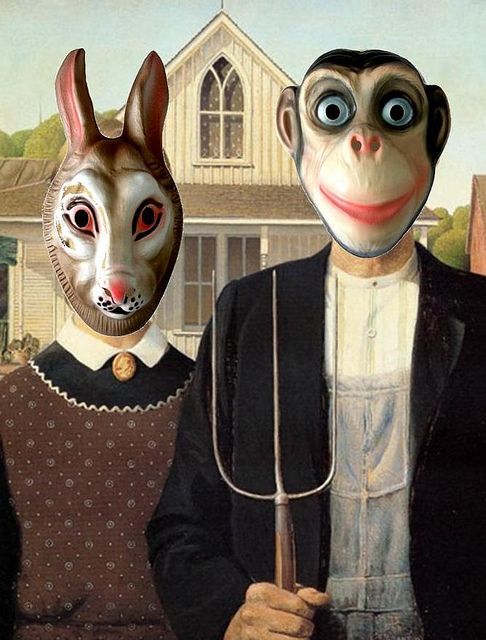JULY 4, 2020 – (Cont.) “Who? I think I don’t know you,” he said. However much my chum might’ve changed physically, he wouldn’t have developed a thick accent.
I showed him the photograph and explained why I’d thought he was Dick V. By this time, the woman had approached. By the shape of her mouth I could tell that her native language wasn’t English either.
Curious, I quickly acquired information. They were immigrants from Bosnia; Muslims who’d suffered greatly during the Serbs’ siege of Sarajevo in the Bosnian War (1992 – 95). Ten years before our encounter, this couple had followed relatives to America—and Minnesota. The man was a stonemason, which explained all the stonework—outside, and inside, as the couple would show me proudly. The deer-in-the-woods mural on the garage door had been painted by the man’s cousin, who “is great artist,” I was informed by the stonemason’s wife.
As the couple offered me a chair and the wife brought me a glass of lemonade, I openly celebrated my good fortune. Thanks to mistaken identity and an old Christmas photograph from my parents’ attic, there I was, chatting with Bosnian Muslims now living on a street that connected to my insular boyhood neighborhood!
Having traveled to the Balkans in 1981, I asked many questions about the couple’s experiences growing up where World War I had been detonated; and more directly, living under the brutal Serbian siege of more recent history. They spoke openly. I could readily understand why America had beckoned.
To signal empathy, albeit at the risk of touching raw nerves, I asked a simple but loaded question: “Here and now, how do you feel toward Serbs?”
“Serbs, good!” the stonemason answered. His wife joined enthusiastically.
Dumbstruck, I thought: From the Bosnian perspective, what part of “Serbs, good” am I missing?
I asked follow-up questions, but the answers turned my assumptions into a vehicle crashing through the guardrail of a coastal highway and rolling down a long steep slope into the roaring surf below.
I airlifted the conversation back onto the highway. “Well,” I said, “I’m glad you decided to find your way here to America!”
With toothy smiles, my hosts thanked me.
“America is strong because of immigrants like you,” I said for good measure.
This time, the conversation didn’t merely roll down the slope. It went airborne.
“Yes, immigrants good,” said the stonemason. “But Black people—no good!”
“Yes,” said the wife, “Black people, no good!”
“Chinese—no good!” said the man.
“Chinese—no good!” said his wife.
“Somali people—no good!”
And so on down the list of recent immigrant groups. Then the man reached “Mexicans.”
“No good!” he said, but before the wife could affirm, the man expressed second thoughts. “No, maybe Mexicans—okay.”
His wife agreed, though with qualification. “Yes, maybe some Mexicans—okay,” she said.
“Yeah, some okay,” said the man, revealing that his wife wielded more influence than I’d inferred to that point.
America. What a country. What a beautiful country—I mean, menagerie.
Happy Fourth!
(Remember to subscribe to this blog and receive notifications of new posts by email.)
© 2020 by Eric Nilsson
